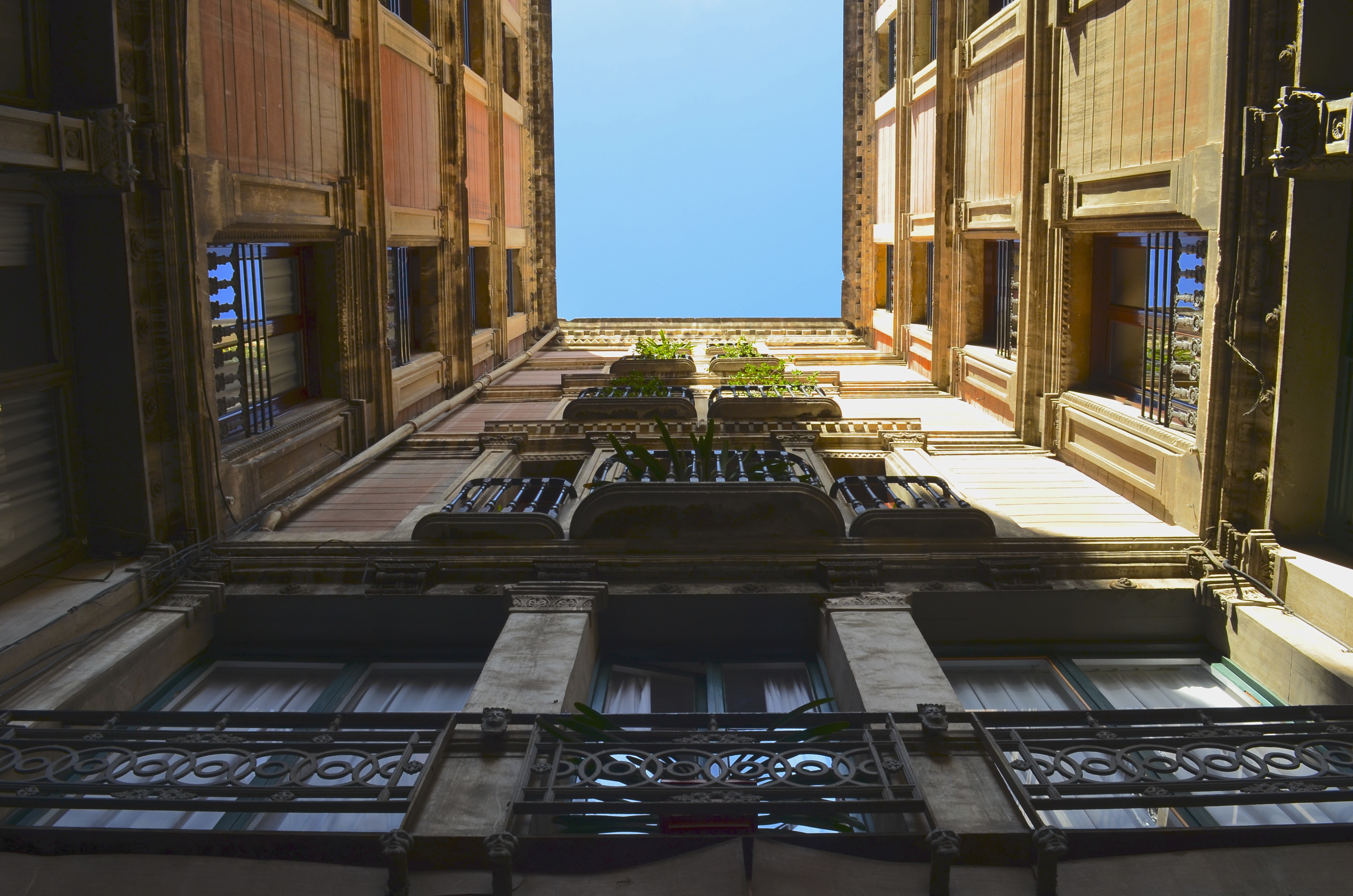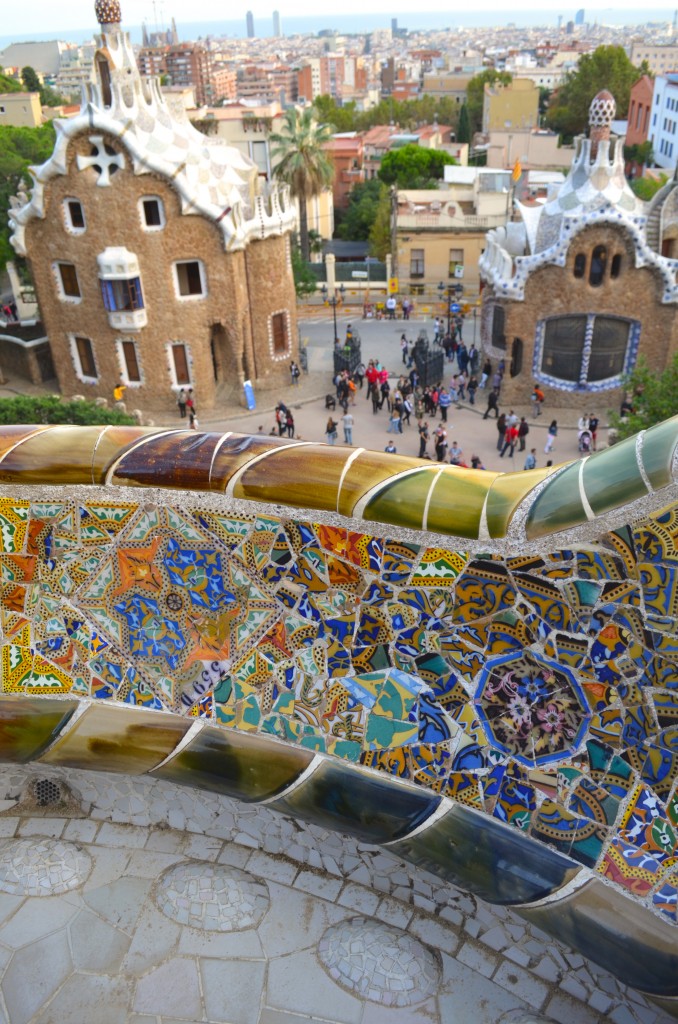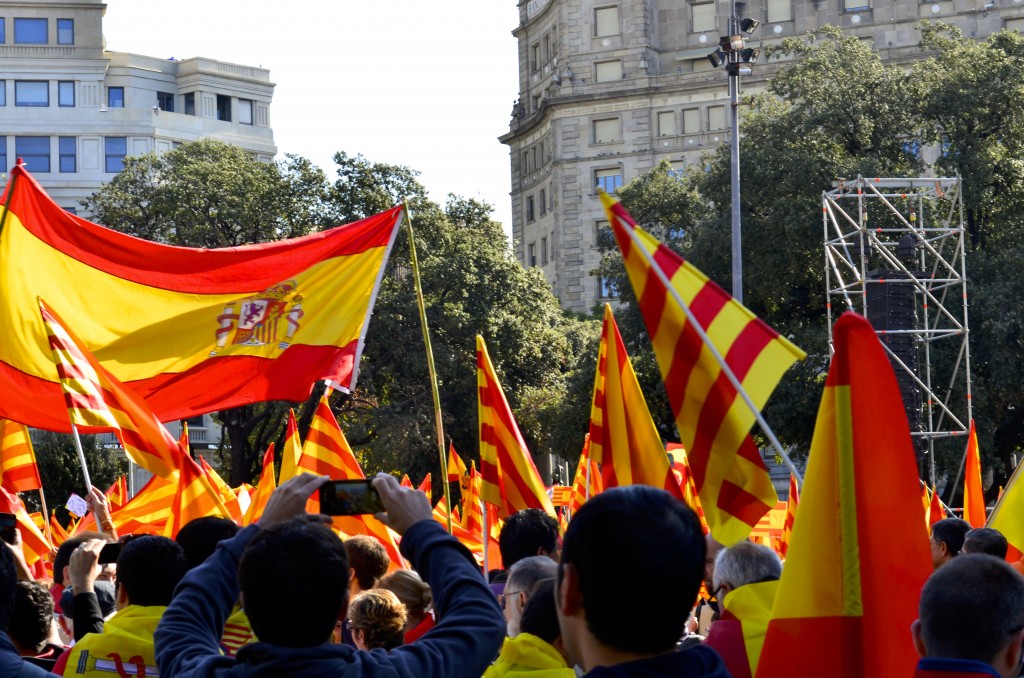Finding Miró: Barcelona

Join special projects intern Gabriela Ayala every Friday as she travels in Miró’s footsteps through Europe.
Barcelona, Spain
Relaxed and ready to walk, I awake early to take on the city and locate a couple of researched Miró-related destinations. Luckily today, the sun is out to guide me along. First on my list is the Parc Joan Miró. This is easy because it is also clearly located on a map. Barcelona is a busy city. The center has many different types of buildings and so much life on the streets. It is easy to forget that this is a city on a coast and water is merely a fifteen-minute walk away. I learn that as a citizen of Barcelona you have the option, with an affordable yearly fee, to use the many bicycles that are stationed around the city. It was a project established to help encourage people to ditch their cars and adopt an environmentally friendly way to get around. I see a lot of people using this and I think it is pretty neat. Moving along, I find the park and the massive sculpture made by Miró, Dona i Ocell (Woman and Bird). It stands tall at the corner of the park, its many colors glistening to say hello. I then move on to find a gallery named Sala Gaspar. This may or may not be the location it was in originally, but this was a gallery that featured Miró many times. This weekend is a national holiday and therefore the gallery is not open during its regular hours. I do not get a chance to enter but I do take the time to imagine its past. I encounter the effects of this national holiday in more ways than one. As I walk towards one of the most centralized parts of the city, the Rambla, I find myself in a demonstration at the central square. There is red and yellow in every direction, flags flying, and people chanting “España!” I am thrilled. I feel so much energy coming from the pride these citizens feel for their country and it is a fortuitous experience.
Eventually I locate the mural that was on the street in the center of the Rambla. The Rambla is an avenue with all the shops, restaurants and café’s you could ask for. There are flower stands and souvenirs by the millions. At the heart of the street is Miró’s mural. People walk back and forth down this street but not many notice what they are stepping on. There is art beneath their feet. The great part is to see the people who do notice. They stop, back away to see the full picture, and smile.
My final mission is a bit more difficult. I hoped to find Miró’s family home where he lived and worked for a bit. This is meant to be located at number 4 Passatge Del Credit. The map I have is not detailed enough to show the names of the smaller streets and so I find a large street that is meant to intersect with my desired location. Luckily, this street is incredibly lively and visually striking. I find a hidden gallery showing contemporary artists and discover that frozen yogurt has indeed found its way to Europe. Unfortunately, Passatge Del Credit never shows itself to me. I do however see a plaque of a club dedicated to Miró that is very close to where this street should have been, and so I decide I must have been close.

View from Güell Park, Barcelona, designed by Catalan architect Antoni Gaudí. Photographer: Gabriela Ayala
After these Miró specific destinations, I decide to go to locations that are related to people Miró was inspired by. This included the Picasso Museum and Güell Park. The Picasso Museum is undeniably great but Güell Park is something very special. Güell Park is completely designed by Catalan architect Antoni Guadí and built in the years 1900 to 1914. It is a journey of mosaics in many shapes, colors, and patterns. It has the feeling of an amusement park only because of its wonderment. It is like stepping into a new world, into a painting mixed with nature and unique architecture. After taking many pictures and being romanced by the views of the city, I head back to my hotel with happy thoughts that tomorrow will bring me to the next step of Miró’s life, Palma de Mallorca.
Top image: Building in Barcelona, Spain. Photographer: Gabriela Ayala
